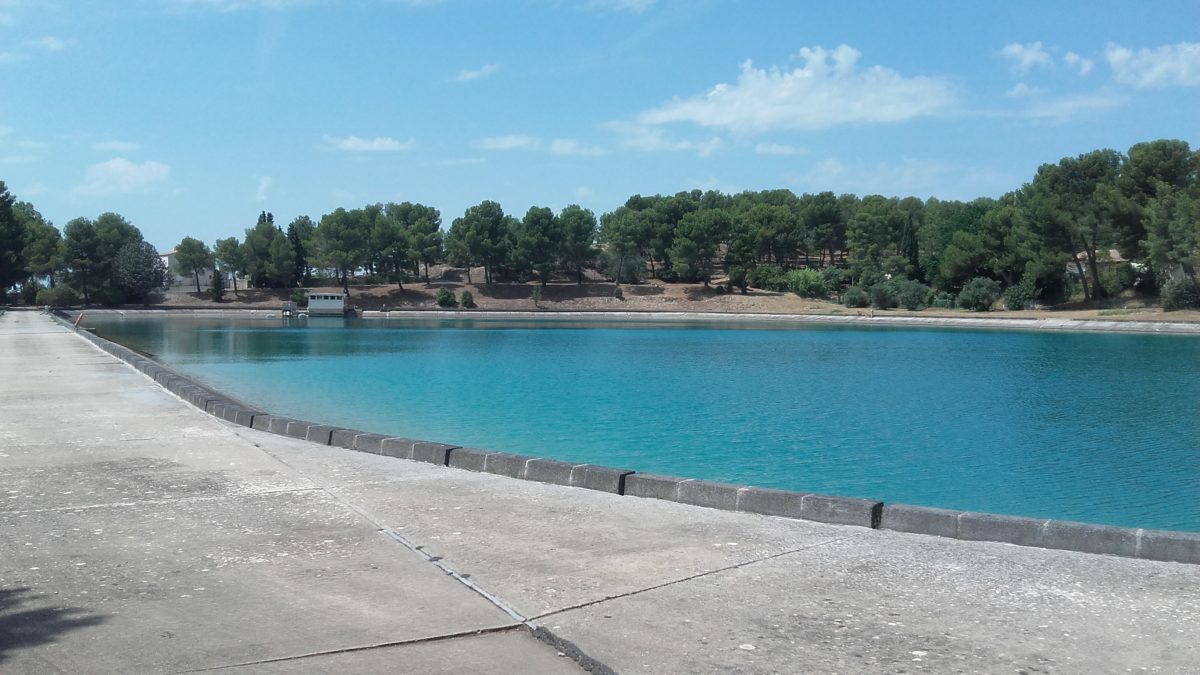From pv magazine France.
Société du Canal de Provence (SCP) plans to deploy a floating PV installation with a solar tracking system on the Barjaquets reserve in Rognac, in the Bouches-du-Rhône region of Southern France.
The agency has now released a tender for the construction of the 250 kW floating plant. Interested contractors will have until February 14 to submit their bids.
The plant, which should be commissioned by the end of this year, was awarded a fixed tariff in a special tender for innovative PV projects held by The French Energy Regulatory Commission (CRE) in February 2018.
Specific information on how the floating system should be combined with the solar tracking system is included in the tender’s documents, SCP research manager Clément Kambourian told pv magazine.
The advantage of using tracking system with this type of installation is still to be studied, as it is still unclear if technical and climatic constraints (notably wind) can be compensated by the yield increase provided from the trackers. “This is precisely the objective of this innovative installation: to confirm that the production gain linked to the tracking system is sufficient to amortize the additional cost of the tracking system,” Kambourian said. “We don't know if this is a world first, but we have never seen such a project elsewhere,” he added.
In 2019, two floating solar power plants were commissioned in France: a 17 MW array built by Akuo Energy in Piolenc and another 226 kW installation installed by Compagnie nationale du Rhône (CNR) in the Madonna lake of Southern France. These projects, however, were not equipped with a tracking system.
A similar project relying on trackers is currently under development in the Netherlands by Floating Solar B.V. The project is planned for a drinking water treatment plant owned by Netherlands-based water utility PWN – Waterleidingbedrijf Noord-Holland – and consists of 15 floating solar plants with a combined capacity of 25 MW.
The solar installations will be based on Floating Solar’s tracking system technology, which ensures rotatation towards the sun during the day. The system is based on an algorithm said to be able to gradually adjust panel position and increase system yield by approximately 30%. “The specially engineered floating structure has been successfully tested under the most severe near-shore conditions,” the company said in June, when the project was launched.
This content is protected by copyright and may not be reused. If you want to cooperate with us and would like to reuse some of our content, please contact: editors@pv-magazine.com.



By submitting this form you agree to pv magazine using your data for the purposes of publishing your comment.
Your personal data will only be disclosed or otherwise transmitted to third parties for the purposes of spam filtering or if this is necessary for technical maintenance of the website. Any other transfer to third parties will not take place unless this is justified on the basis of applicable data protection regulations or if pv magazine is legally obliged to do so.
You may revoke this consent at any time with effect for the future, in which case your personal data will be deleted immediately. Otherwise, your data will be deleted if pv magazine has processed your request or the purpose of data storage is fulfilled.
Further information on data privacy can be found in our Data Protection Policy.